
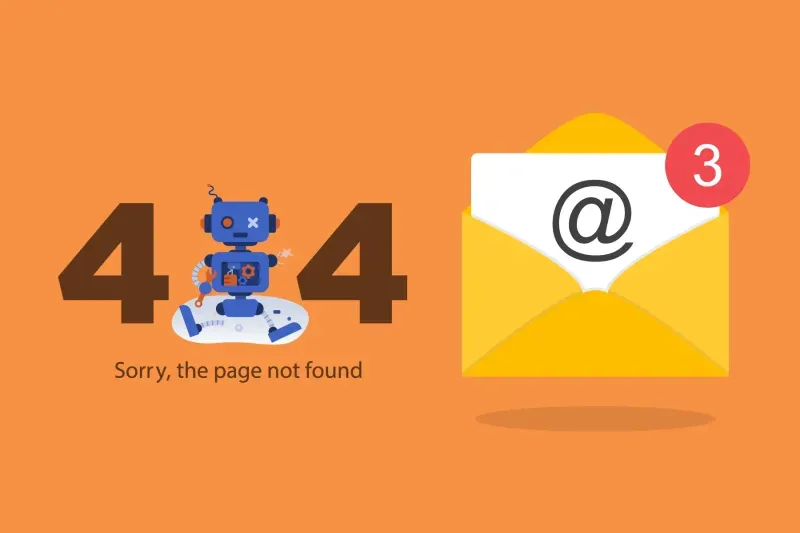
URL monitoring is a service that checks the health of your website. WhaTap Labs, a Korean IT monitoring service company, has started offering URL monitoring for free. WhaTap Labs is offering up to 10 URLs for free.
The reason why I was interested in URL monitoring from WhaTap Labs is that there was no URL monitoring service that I could easily use in Korea. Since URL monitoring is a service that measures the speed of the network from a remote location, it is necessary to have a server in Korea to check URLs. If you use famous overseas URL monitoring services in Korea, there is usually a delay of more than 1 second because it is checked through an overseas network.
With checkpoint servers located in AWS in Seoul, I think WhaTap Labs' URL monitoring will be helpful for domestic IT companies.
Get notified when your website goes down
URL Monitoring is not hard to use - it is simple enough that you do not need any IT knowledge to use it. Let's take a look at how to get notified via email when your website is down
1.Sign up for the WhaTap service
To use WhaTap URL monitoring, you need to sign up for the service (whatap.io). The WhaTap monitoring service does not charge you to sign up, so click Get started for free.
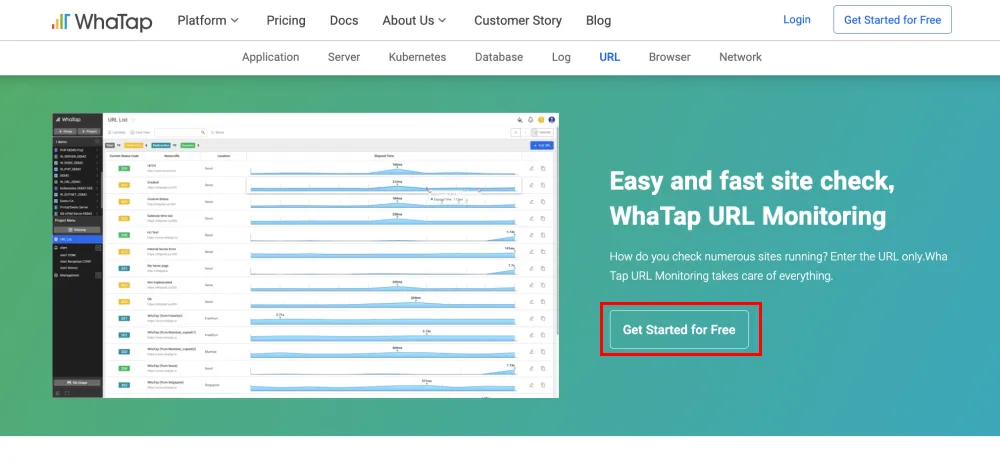
Click Get started for free, then enter your company name, name, email, password, and phone number and verify your phone number to sign up.
2. Create a project
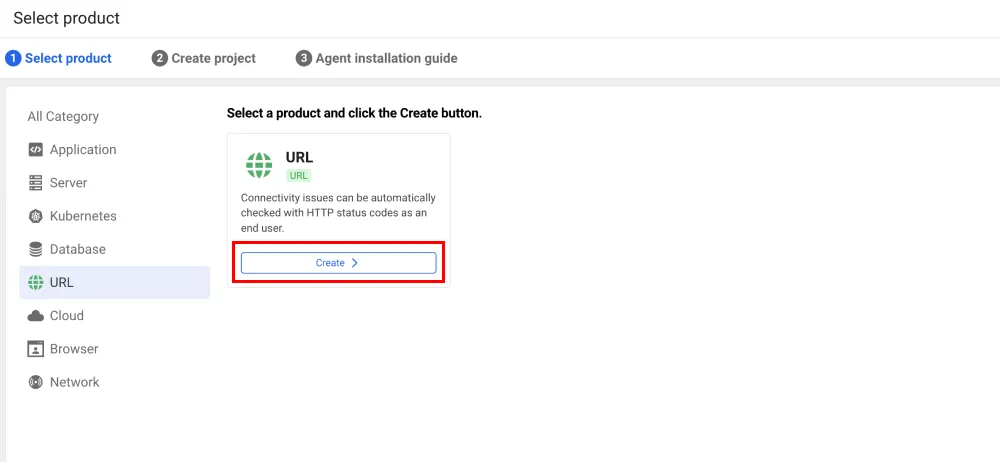
c
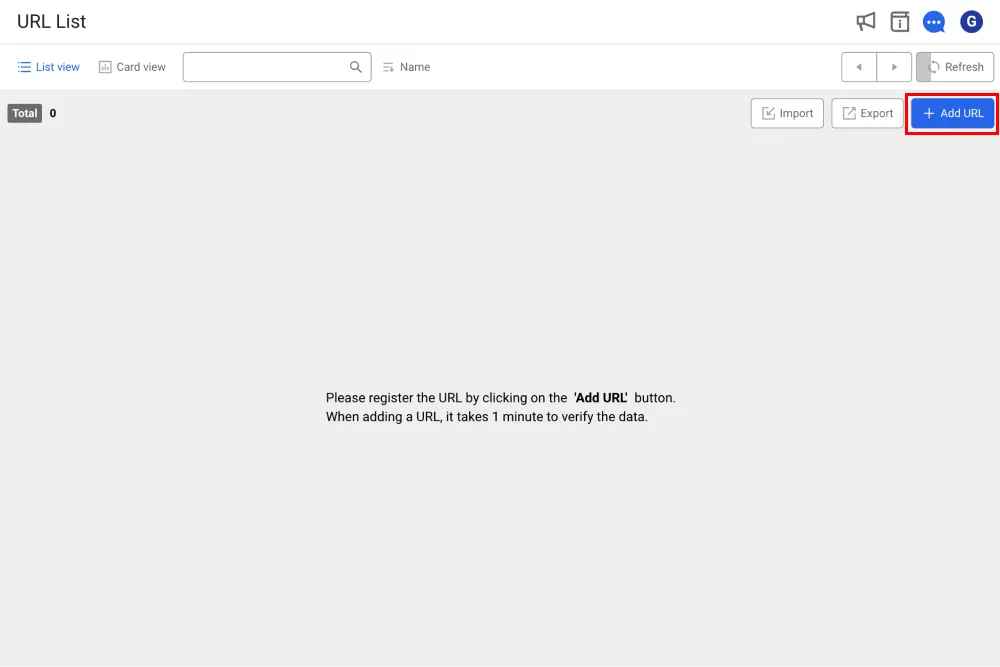
3. Add a URL
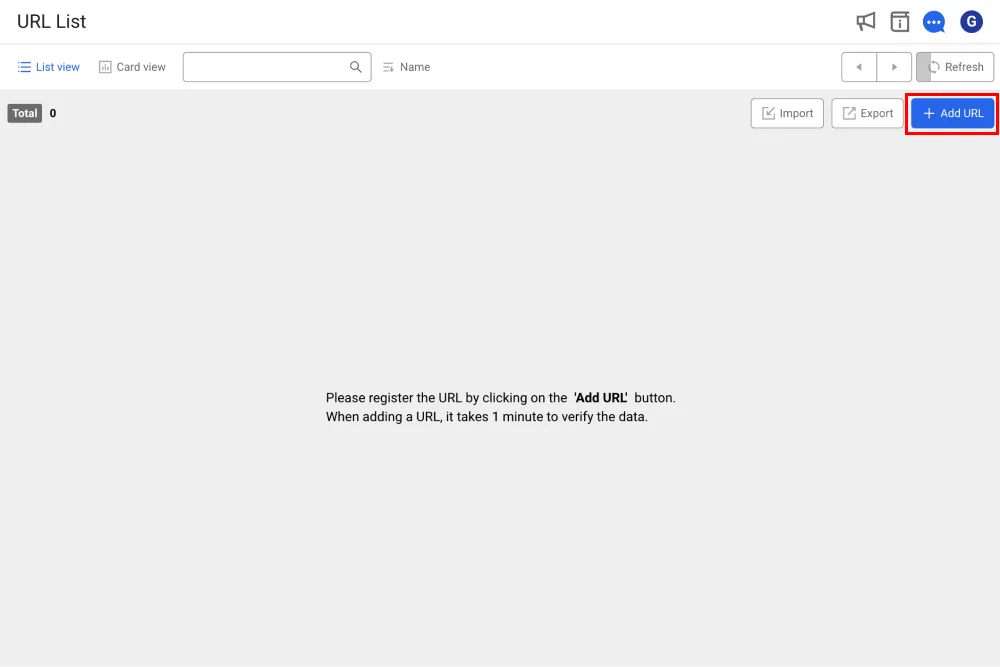
4. Add a URL
Click the Start monitoring button to go to the monitoring screen. The service status code will tell you if it is healthy or failing, and the elapsed time will help you identify network issues.
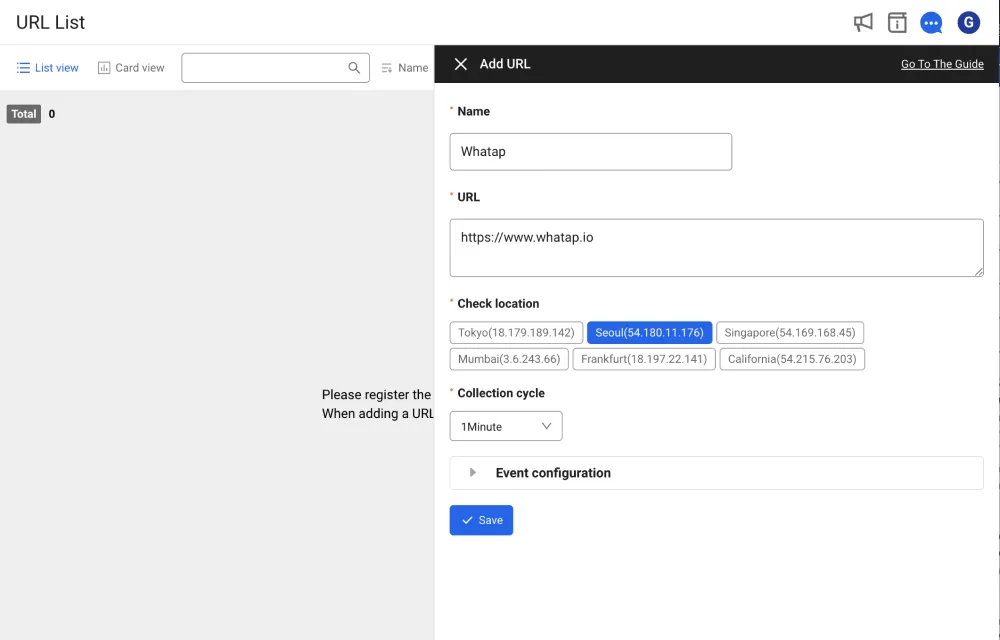
5. Event settings
You can define the situations you want to check through 'Events' > 'Event Settings' on the right list screen. Currently, WhaTap URL Monitoring allows you to set events for response codes in the 400s, 500s, and when no response code exists.
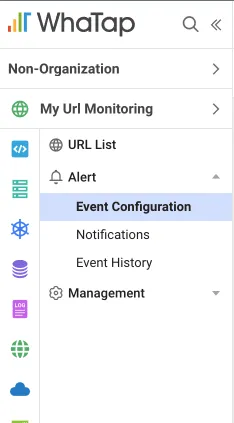
You will be setting up events per URL. Click the Modify button.

Enable all in the event settings.
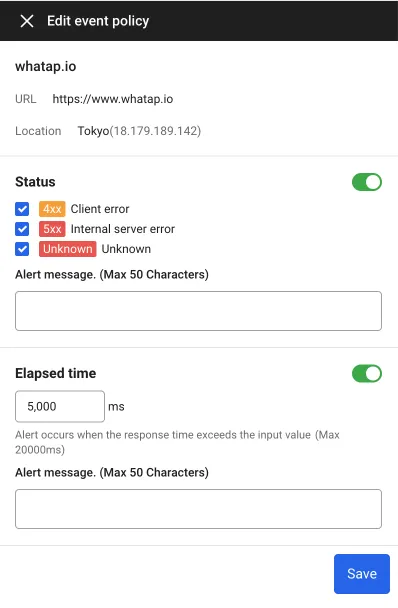
6. Event receipt settings
Event receipt settings set how you want to receive events as they occur. URL monitoring is a service we are constantly improving, and email is now supported as well.
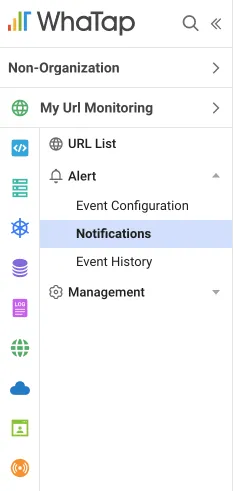
Wrapping up
This was a walkthrough of how to use URL Monitoring to get an email when a website goes down.
I expect the UI to continue to improve and show more information in the future. If you are interested in checking the health of your own web services, you can try URL monitoring for free at whatap.io.
.svg)
.svg)






